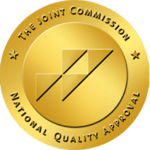If other addiction treatment methods have not worked for you, one option your doctor may suggest is the TMS therapy program. Westwind Recovery® works with local TMS providers to refer clients based on clinical recommendations. This proven method for treating addiction can help you recover.

What Is TMS Treatment?
Transcranial magnetic stimulation, otherwise known as TMS, is an option for people struggling with addiction. A brain pathway (or neuronal pathway) is like a power line between two brain regions. A brain pathway is made up of interconnected neurons, and signals travel along them from one area of the brain to another. Neurotransmitters are molecules that allow a message to move from one neuron to another. All drugs of abuse interfere with neurotransmitter signaling in some way.
Dopamine is the primary neurotransmitter used by the reward pathway. Neurologists also call this pathway the mesolimbic pathway. Most drugs of abuse interfere with dopamine signaling. This interference compels addicts to continually seek more and more of their “drug of choice” as they develop a tolerance to usual doses. At the same time, they are looking for the same dopamine rewards promised by minuscule doses when they first started getting high.
Many drugs of abuse also interfere with serotonin signaling. These include cocaine, amphetamines, LSD, and alcohol. Serotonin plays a role in many processes, including body temperature regulation, sleep, mood, appetite, and pain. Problems with serotonin signaling are linked to obsessive-compulsive disorder, anxiety disorders, and depression. Many medications for treating depression increase serotonin levels in the brain.
To combat these maladies and arm our clients with the latest tools science has to offer, Westwind Recovery® often will work with the Southern California TMS Center.
Transcranial magnetic stimulation (TMS) represents an exciting non-medication and non-invasive option for the treatment of some brain health conditions, specifically TMS for depression. TMS works by using magnetic therapy in the form of magnetic field pulses to stimulate the brain’s nerve cells to alleviate the symptoms associated with depression. Also, there is growing research exploring the effectiveness of TMS in other neurological conditions, including Alzheimer’s disease and other memory disorders.
Is the TMS Treatment Program Safe?
Our concern for your safety is paramount. TMS is a noninvasive treatment, which means you won’t need an incision or general anesthesia. For most clients, there are no drawbacks. However, some people experience side effects, such as:
- Feeling lightheaded
- Irritation at the stimulation site on the scalp
- Headache
- Twitching on the face
For some clients, there is a possibility of more severe side effects, such as seizures or mania. However, these side effects are rare. TMS is entirely painless. Clients report that they can feel a tapping from the coils during treatment, but the tapping does not hurt.
TMS therapy does not have to be the last resort for treatment. Instead, this treatment option can help clients recover faster.
TMS Therapy Program
At Westwind Recovery®, we partner with experienced TMS providers such as the Southern California TMS Center to help our clients access this treatment program. Depending on the recommendation of your doctor, TMS therapy can be part of your treatment plan. Besides connecting clients with TMS therapy center, Westwind Recovery® provides the following:
- Trauma therapy programs
- Dual diagnosis treatment programs
- Chronic pain management programs
- Life skills training programs
If you’d like to learn more about how TMS therapy can can help you defeat addiction, contact Westwind Recovery® today. It’s time to break free, and recovery is within reach at Westwind Recovery®.

Dr. Deena is the Chief Clinical Officer of Westwind Recovery®, an award-winning outpatient treatment center in Los Angeles where she oversees the clinical and administrative program and treatment methods. Dr. Deena is a doctor of psychology and licensed clinical social worker since 1993. LCSW #20628. Originally from the East Coast, Dr. Deena has worked running treatment centers, worked as a therapist in psychiatric hospitals as well as school settings and currently has a thriving private practice in the LA area. Dr. Deena has appeared regularly on the Dr. Phil Show as an expert since 2003. She has also been featured on many other TV shows, podcasts and has contributed to written publications as well as podcasts.



